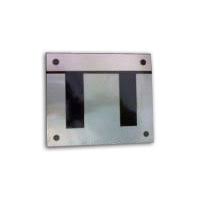
Source: http://avasiyamillai.blogspot.com/2011/07/nuclear-power-plant.html
2. The energy freed from the fusion of nuclear fuel heats the water in the surrounding.
3. Consequently, this produces steam which drives the turbines. The turbines then drive the electrical generators.
4. The table below summarises the main functions of each components.
Component
|
Function / Explanation
|
Graphite Moderator
|
Fast moving neutrons are slowed down by collisions with
nuclei in the moderator so that they can cause further fissions. In some
nuclear power plant, the moderator is water.
|
Uranium rod (Fuel)
|
Fission reactions take place in the uranium rod to create
nuclear energy. The uranium used is often ‘enriched’ by increasing the
proportion of the isotope uranium-235 above the natural value of 0.7% to 3%.
|
Control Rod
|
The rate of the fission reaction is controlled by
inserting or withdrawing these rods. The nuclei in the rods absorb neutrons
without undergoing any reaction. Sometimes the rod is made of cadmium.
|
Coolant
|
To take away heat from the nuclear reactor.
Substances with high specific heat capacity such as ‘heavy’ water and carbon
dioxide are used.
|
Thick Concrete Wall
|
To avoid the run off of harmful radiations.
|
Steam generator
|
Water in the generator is heated and changed into
steam. The steam then drives the turbines.
|
Turbines
|
To revolve the dynamo in the electrical generator to
generate electricity
|
5. Nuclear reactors are used in the production of:
a) High-intensity neutron beams for research
b) Artificial Radioactive Isotopes for medical research
c) Fissionable transuranic elements such as plutonium from uranium-238
Reasons for the use of Nuclear Energy
1. Production of nuclear energy from nuclear fuels involves a decreased cost. A small amount of nuclear fuel can provide a large amount of energy.
2. Nuclear reactors are relatively safe especially with the sophisticated technology constantly developed and improved.
3. The decreasing supply of fossil fuels make it essential for the use of alternative sources of energy.
4. The use of nuclear energy does not release greenhouse gases such as carbon dioxide.
Reasons against the use of Nuclear Energy
1. Radioactive residues from nuclear stations have quite a long half-lives.
2. There is a chance of leakage in the radioactive waste containers placed underground or underwater.
3. High cost of constructing a nuclear power station.
4. Accidents could happen due to human error no matter how sophisticated the technology is and this should be put into consideration.















